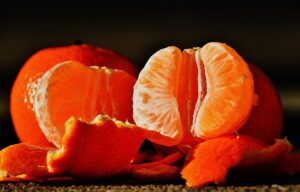Introduction
In the world of biology, DNA and proteins are two essential components that play vital roles in the functioning of living organisms. Both DNA and proteins are composed of various elements, but which element is found in both? This article will explore the elements sulfur, sodium, nitrogen, and chlorine, and their presence in both DNA and proteins.
Sulfur
Sulfur: Sulfur is an element that is found in both DNA and proteins. In DNA, sulfur is present in the form of sulfur-containing bases, specifically cysteine and methionine. These bases contribute to the three-dimensional structure of DNA and are involved in the formation of disulfide bonds, which stabilize the DNA molecule. In proteins, sulfur is present in the amino acid cysteine, which plays a crucial role in protein folding and stability. Cysteine residues can form disulfide bonds between different parts of a protein, contributing to its overall structure and function.
Sodium
Sodium: Sodium is not found in either DNA or proteins. Sodium ions, however, are important for cellular processes and are involved in maintaining the overall balance of ions within cells. They play a role in the transmission of nerve impulses and the regulation of fluid balance in the body.
Nitrogen
Nitrogen: Nitrogen is an element that is present in both DNA and proteins. In DNA, nitrogen is found in the nitrogenous bases adenine, guanine, cytosine, and thymine (or uracil in RNA). These bases form the genetic code and are responsible for the transmission of genetic information. In proteins, nitrogen is present in the amino acids that make up the protein chain. Nitrogen is an essential component of the peptide bonds that link amino acids together, forming the primary structure of proteins.
Chlorine
Chlorine: Chlorine is not found in either DNA or proteins. Chlorine ions, however, are involved in various physiological processes in the body, such as maintaining the balance of fluids and electrolytes, regulating blood pressure, and supporting proper nerve and muscle function.
Conclusion
In conclusion, sulfur and nitrogen are elements that are found in both DNA and proteins. Sulfur is present in the form of sulfur-containing bases in DNA and the amino acid cysteine in proteins. Nitrogen is found in the nitrogenous bases of DNA and the amino acids that make up proteins. On the other hand, sodium and chlorine are not present in either DNA or proteins. Understanding the elements present in DNA and proteins helps us comprehend their structure and function better.
References
– National Center for Biotechnology Information. (n.d.). PubChem Compound Summary for CID 5362487, Sulfur. Retrieved from pubchem.ncbi.nlm.nih.gov/compound/Sulfur
– National Center for Biotechnology Information. (n.d.). PubChem Compound Summary for CID 5360545, Sodium. Retrieved from pubchem.ncbi.nlm.nih.gov/compound/Sodium
– National Center for Biotechnology Information. (n.d.). PubChem Compound Summary for CID 947, Nitrogen. Retrieved from pubchem.ncbi.nlm.nih.gov/compound/Nitrogen
– National Center for Biotechnology Information. (n.d.). PubChem Compound Summary for CID 313, Chlorine. Retrieved from pubchem.ncbi.nlm.nih.gov/compound/Chlorine













